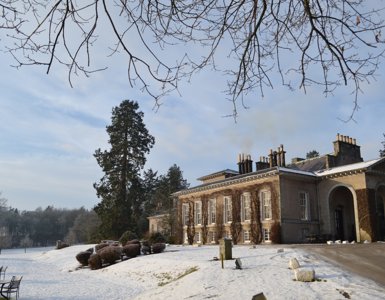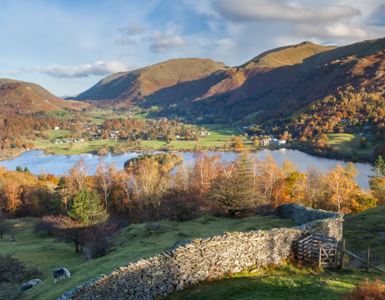The Best High-Difficulty Hikes in the Lake District National Park

If you’re gearing up for a trip to the Lake District and looking for more than just a casual stroll around Lake Windermere, look no further. This guide is your one-stop shop for the most difficult Lake District walks. We’re not talking about your average nature walk – we’re diving into trails that’ll challenge you, push you, and probably make you rethink your life choices… In the best way possible.
Expect steep climbs, heart-pounding descents, and paths that don’t mess around. From high ridges to hidden valleys, these hikes are for those who want to earn their views. So, if you’re up for the challenge, grab your gear, and let’s dive into the hardcore side of the Lake District National Park.
THE 8 BEST DIFFICULT LAKE DISTRICT HIKES
These aren’t your average walks in the park (lake). We’ve curated a list of the most demanding and rewarding hikes the Lake District has to offer, so you can choose the ones that most appeal to you. If you’re after easy Lake District walks, you won’t find them here, but you can read our helpful guide to the best beginner walks in the Lake District here.
1. SCAFELL PIKE FROM WASDALE HEAD
Beginning at the Wasdale Head Inn car park, your journey to England’s highest peak unfolds through a picturesque valley, gradually giving way to rugged mountain terrain.
The initial part of the hike is deceptively easy, following the path alongside Lingmell Beck. As you ascend, the landscape becomes more rugged, with rocky outcrops and steep inclines becoming the norm. The corridor route, while providing stunning views, demands concentration and sturdy footing.
As you approach Mickledore col, the challenge intensifies. The route navigates the rocky spine of Broad Crag, immersing you in a landscape that feels both formidable and awe-inspiring. The final push to the summit of Scafell Pike involves a scramble, so you’ll feel that accomplishment when you make it to the top. If that isn’t enough, you’ll also be rewarded with panoramic views that stretch across the Lake District.
2. BLENCATHRA VIA SHARP EDGE
Blencathra towers above the charming town of Keswick, forming an instantly recognisable seat-like shape that inspired its name. You can start this Lake District walk from the foot of the mountain at Scales Farm.
You’ll be greeted by a gentle warm-up before coming up on Sharp Edge, one of the most challenging hiking trails in the Lakes. This rocky ridge requires your full attention and appropriate footwear and isn’t suitable for anyone with a fear of heights.
Once you’ve conquered the Edge, you hit the summit of Blencathra. You can take a well-earned seat on the giant rocky throne and admire the 360-degree views of the Lake District.
3. HELM CRAG AND WYTHBURN FELLS
If you’re up for a Lake District trek that’s got a bit of everything – challenging ascents, stunning views, and unique beauty – the Helm Crag and Wythburn Fells walk will be right up your street. This Ambleside-based hike isn’t just one of the best Lake District walks; it also takes you along one of the lesser-known fells.
You can start in the hamlet of Little Town and make your way up Helm Crag. It’s a bit of a grunt, but the summit’s Lion and the Lamb rock formations make it all worthwhile. The stunning scenery over Grasmere is another bonus.
The fun continues as you tackle Wythburn Fells. The terrain gets a bit challenging, especially around the Green Burn area, but that’s the beauty of it. You’re not just walking; you’re navigating through the true Lake District in an area that feels a bit wild and incredibly rewarding.
As you summit, the panoramic views of Thirlmere and beyond unfold. It’s the kind of scenery that makes you appreciate the effort you’ve put in. The descent is no cakewalk either, with some steep bits to keep you on your toes. Once you touch down in Grasmere, if you’ve worked up an appetite, why not stop for a quintessential afternoon tea or a hearty meal with lakeside views at the Daffodil Hotel’s Lakeside Terrace?
4. HELVELLYN VIA THE EDGES
If you’re after the best long-distance walks in the Lakes, Helvellyn via Striding Edge and Swirral Edge should be on your list, as it’s the Lake District’s second-highest peak. You can start this classic walk at Glenridding, a charming spot nestled by Ullswater, and from there, things start to get seriously interesting.
It’s definitely not for the faint-hearted or inexperienced, as a lot of scrambling is required. You’ll come across the knife-edge ridge of Striding Edge first, navigating its many twists and turns as the sweeping vistas of the Lakes unfold beneath you.
Then it’s on to Helvellyn. The summit rewards you with panoramic views that are the stuff of dreams. There are fells in every direction, including the striking Catstye Cam.
This Lake District hike doesn’t end at the summit, though! The descent via the iconic Swirral Edge features more steep sections to keep you on your toes until you’re at the base.
5. OLD MAN OF CONISTON AND SWIRL HOW
The Old Man of Coniston is a famous Lake District Walk and also the highest point in Lancashire. The route starts in the picture-perfect village of Coniston, which we recommend you explore before or after your hike!
The ascent up to the summit is definitely a thigh-burner, with steep sections that’ll test your mettle. But, as with all the hikes on our list, the views make it all worthwhile. On a clear day, you can even see the Isle of Man.
Once you’ve enjoyed the summit, you’ll be navigating to Swirl How and several other Coniston Fells. It’s a rollercoaster of peaks and valleys, with some rocky bits thrown in for good measure. The terrain gets a bit wild, but that’s precisely why you’re here, right?
6. FAIRFIELD HORSESHOE
Starting in the lively town of Ambleside, the challenging Fairfield Horseshoe trek introduces you to the rugged beauty of Nab Scar as a warm-up act. Brace yourself as you ascend the horseshoe-shaped route, conquering peaks like Dove Crag and Hart Crag before reaching the crown jewel, Fairfield.
The ridges offer exhilarating views that will be begging you to snap some pictures. It’s a demanding journey, a mix of ascents and descents that pushes your limits.
The descent back to Ambleside is via Great Rigg, Heron Pike and Nab Scar to Rydal before finishing with a short stroll back to Ambleside.
7. GREAT GABLE FROM SEATHWAITE
Great Gable isn’t the highest summit, but it still offers a challenge with incredible views. The classic route starts in the tranquil hamlet of Seathwaite. The path weaves through picturesque landscapes before ascending to Styhead Pass, where the challenge amps up.
Scaling the rocky terrain demands determination, and as you approach the summit, you’re met with a dramatic panorama of the Lakes. The route includes sections like the boulder-strewn corridor leading to the summit, so though it isn’t highly technical or exposed, it still requires concentration.
The descent through Windy Gap adds another layer of challenge, making the entire journey a true adventure that you’ll be proud to say you’ve completed!
8. MOSEDALE HORSESHOE FROM WASDALE HEAD
Last but not least, if you’re looking for a challenging path into the heart of the Lake District, the Mosedale Horseshoe from Wasdale Head promises an epic trek.
Commencing at the iconic Wasdale Head, the route leads you into the rugged embrace of Mosedale Valley. The ascent is no walk in the park; it’s a steady climb with striking views unfolding as you gain elevation. As you approach Black Sail Pass, the landscape transforms, revealing the breath taking sight of Pillar Rock.
Brace yourself for the highlight of the journey – the rocky ridges of Pillar and Scoat Fell. Negotiating these dramatic heights is not just a physical test but a mental one, with sheer drops and exhilarating panoramas at every turn.
The descent via Red Pike completes the horseshoe, ensuring a full-circle adventure through some of the Lake District’s most challenging and visually stunning terrain.
REST AND RECHARGE AT THE DAFFODIL HOTEL & SPA
You’ll need to be fed and pampered after all those challenging hikes, and where better than the Daffodil Hotel & Spa in Grasmere? Take advantage of our on-site spa to relax your muscles before retreating to the comfort of your luxurious room or suite.
If you’re feeling hungry after your rest, you don’t have to leave the hotel to find an incredible meal. We’ll treat you to a memorable dining experience at our restaurant. Our talented chefs use only the finest locally sourced ingredients to create signature dishes. Afterwards, why not head to our inviting lobby bar? You can unwind with your favourite cocktail, a glass of wine, or a local beer.
We are committed to providing you with a truly unforgettable experience during your stay with us.
FAQS
IS HELVELLYN HARDER THAN SCAFELL?
Scafell Pike is considered to be a harder hike than Helvellyn due to its steep incline and scree slope on the way up to the summit. However, you can choose less difficult routes up Scafell Pike, like the popular route from Wasdale Head. This route is considered less technical than some of the routes on Helvellyn.
Both Helvellyn and Scafell Pike are among the highest peaks in England and can present challenges.
WHAT IS THE HARDEST HIKE IN THE UK?
The title of the hardest hike in the UK is often attributed to the Aonach Eagach Ridge in Scotland’s Glencoe. Known for its exposed and narrow ridge with challenging scrambles, it demands a high level of fitness, rock climbing skills, and a head for heights.
The terrain is rugged, and the ridge provides stunning but potentially intimidating views. Due to its difficulty, it’s recommended for experienced and well-prepared hikers seeking a thrilling and challenging adventure in the Scottish Highlands.
WHAT IS THE DIFFERENCE BETWEEN A LAKE AND A TARN?
Lakes and tarns are both kinds of water bodies, but they have some differences. A lake is a big area of water that can be deep. Lakes are formed in different ways, like by glaciers, Earth movements, or dams.
Tarns are small mountainside lakes. They’re often made when glaciers melt, leaving small dips in the land. So, lakes are larger and formed in various ways, while tarns are smaller, often found in the mountains, and connected to glacial activity.
Awards








